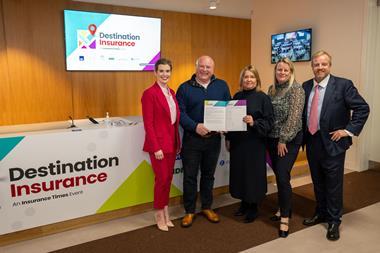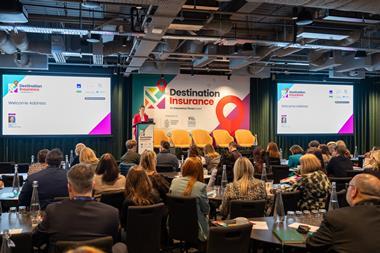A management guru once observed “the ability to learn faster than our competitors may be our only sustainable competitive weapon”. But while in the past there have been few business-transforming ideas in the insurance sector, the future could be even bleaker.
Some principles of insurance never change. The industry still broadly:
The real major changes to the industry over the past 50 years have been in the processes, analysis of risk, the use of communication tools and the broadening of rating factors. I suspect an underwriter from 40 years ago would not be entering a totally alien world if he actually returned today.
I have cast my mind back over my 40-plus years in the industry and considered what were the ideas that had the greatest impact.
1 Direct Line
This has to be the change that had the most impact. The concept that the customer would buy direct, bearing in mind the broker stronghold in the market at the time, was a bold one. Coupled with the use of technology, unsurpassed service and the use of PR and advertising, it totally changed the market. In the 1990s, the existing insurers lost billions of pounds trying to compete and match the service – and failed in the end. Direct Line set a new standard of service and forced the public to change its perception of motor insurance. Motor insurance service is no longer the butt of pub talk and of course it made its originator, Peter Wood, a multi-millionaire.
2 Royal-Unicover
Faced with a restriction of what building societies could sell, the Royal developed a concept of rating contents insurance from the building sum insured. It changed the market in the 1970s and 1980s and led to a big shift of contents cover to the mortgage lenders. More than 60% of new borrowers were insuring contents with them as well as the building. This caused a change in distribution, as well as introducing customers to a much wider cover. It led to the mortgage market's dominance in the whole household sector.
3 The Morgan brothers and Jerry Lewis
Who were these, you might ask? The Morgan brothers developed the computer for their own business – a concept that has evolved into Misys today, supplying more than 50% of the broker market. They started a company that has now become a worldwide computer service provider. Jerry developed the first comparative motor quote system which initially was on paper, but was later computerised and known as Instaquote. This transformed the way brokers operated and gave them the tools to increase their share of the market.
4 The Package Policy
Someone in the 1970s developed the package policy, putting together all the covers the shopkeeper needed into one detailed policy with a rating based on sums insured. This quickly extended to many smaller trade sectors and became the market norm – a huge move which transformed the small business market.
5 Swintons
When Ken Scowcroft started Swintons in the 1960s, little did he know the revolution he would cause. Swintons changed the profession of broking into retailing and gave the public access to motor insurance shops. At its height, it had more than 500 shops and then sold out to the Sun Alliance for more than £150m, making the owner one of the richest people in the UK. They started and sold out just at the right time.
6 NZI Bonus
The idea that brokers would place all their small business with one insurer and have an underwriter sitting in their office seemed a silly one. In reality, it was just ahead of its time. Consolidation of small business with a limited number of insurers is now the norm, and for more than 20 years its successor, GA Bonus, led the field with no real competitors.
7 Provincial – household all risks
A small company took a giant leap by extending household insurance to an all-risks basis with the TSB. It then extended the concept to its broker range, forcing the market to follow. Customers were given a much wider cover – all-risks cover is now normal both in the personal and commercial sectors.
8 The independent club
Setting up a new insurance company distributing through a small number of independent brokers on an exclusive and club-basis went against the flow. Innovative underwriting, coupled with risk management, set a benchmark for the industry and now all major companies have focused distribution strategies. Whatever the current situation, the independent club concept changed commercial insurance distribution within the UK market.
9 AA household
When the AA decided to expand into household insurance, it wanted a simply rated product and produced, in conjunction with the GA, a household package rated on the type of buildings and number of bedrooms. This enabled it to grow rapidly and led to bedroom-rated contents insurance becoming a strong alternative to sums insurance for the mass household market.
10 Free motor insurance
The ultimate bundling of products, with motor insurance being brought into the price of a new car. Developed by Guardian Royal Exchange, it no doubt produced heavy losses in its early years, but is now a feature of the industry. The General Insurance Standards Council (GISC) permitting, it could mark a major shift in the way products are sold in the future.
There were others which were product-related, such as creditor, warranty, bundled travel, directors' and officers' and there were of course other service-related initiatives, such as EDI and those involving the internet.
Other people may have different views, but what is noticeable now is that the pace of true innovation is slowing. It is now the brokers that are coming up with the ideas and winning awards for innovation, as they are the ones that are close to their clients. Insurers are now much more concerned with manufacturing, and innovation is often restricted by process improvement and cost saving.
This is not surprising – if you mate two elephants, they do not produce a fast-moving leopard, but probably a larger elephant. For NU to succeed it has to be a high-volume, low-cost operator. This means a limited number of products and volume sales. This strategy leads to product stifling rather than innovation, as the latter costs money to change the process and experimentation is expensive. Their strategy must now be to hold onto what they want and turn it into a profitable cash cow. Consolidation among the other insurers has led to similar strategies. Their very size makes it difficult for smaller insurers to have a great impact on them. Try stopping an elephant in full flight!
However, it must be the small insurers that seek to innovate, as this is the only sustainable competitive weapon that they have. Brokers will need to look in the future for the conversion of their own ideas into reality.
There may well be some ideas out there, which will transform the industry in the next ten years, but it will be much harder to bring them to the market successfully.
Hosted by comedian and actor Tom Allen, 34 Gold, 23 Silver and 22 Bronze awards were handed out across an amazing 34 categories recognising brilliance and innovation right across the breadth of UK general insurance.












































